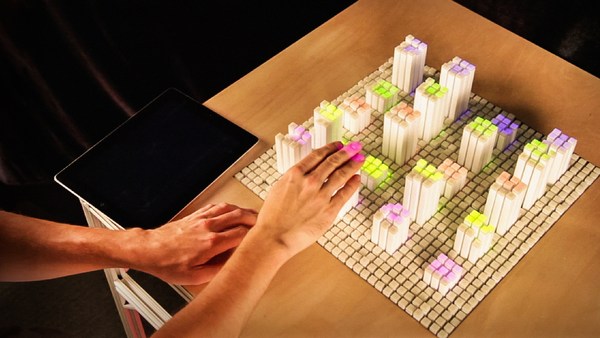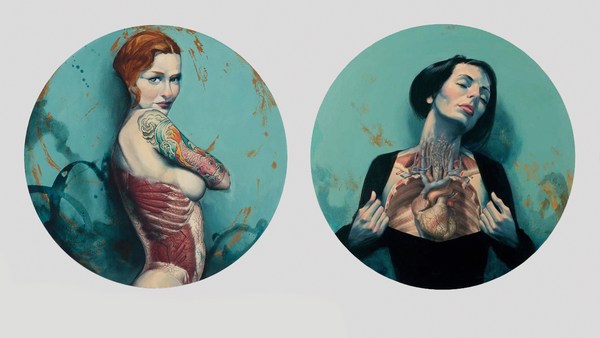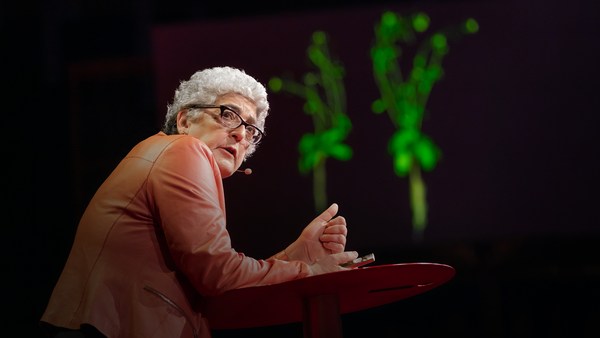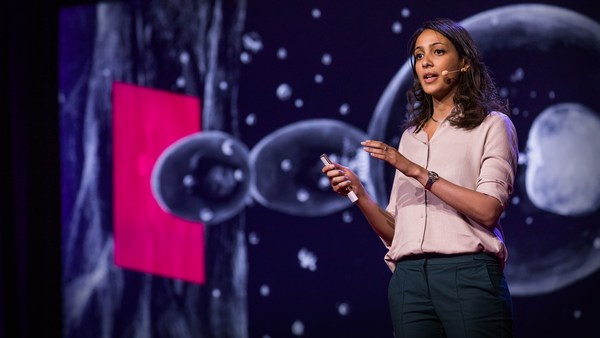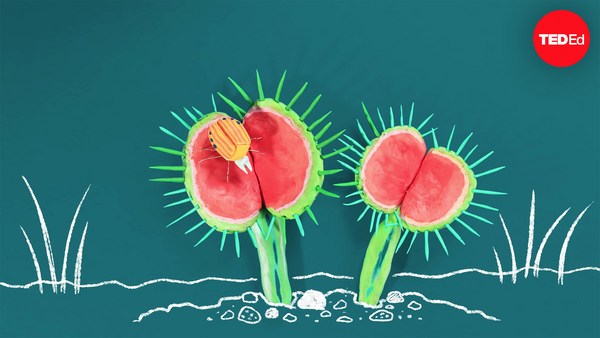What if our plants could sense the toxicity levels in the soil and express that toxicity through the color of its leaves? What if those plants could also remove those toxins from the soil? Instead, what if those plants grew their own packaging, or were designed to only be harvested by their owners' own patented machines? What happens when biological design is driven by the motivations of mass-produced commodities? What kind of world would that be?
My name is Ani, and I'm a designer and researcher at MIT Media Lab, where I'm part of a relatively new and unique group called Design Fiction, where we're wedged somewhere between science fiction and science fact. And at MIT, I am lucky enough to rub shoulders with scientists studying all kinds of cutting edge fields like synthetic neurobiology, artificial intelligence, artificial life and everything in between. And across campus, there's truly brilliant scientists asking questions like, "How can I make the world a better place?" And part of what my group likes to ask is, "What is better?" What is better for you, for me, for a white woman, a gay man, a veteran, a child with a prosthetic? Technology is never neutral. It frames a reality and reflects a context. Can you imagine what it would say about the work-life balance at your office if these were standard issue on the first day?
(Laughter)
I believe it's the role of artists and designers to raise critical questions. Art is how you can see and feel the future, and today is an exciting time to be a designer, for all the new tools becoming accessible. For instance, synthetic biology seeks to write biology as a design problem. And through these developments, my lab asks, what are the roles and responsibilities of an artist, designer, scientist or businessman? What are the implications of synthetic biology, genetic engineering, and how are they shaping our notions of what it means to be a human? What are the implications of this on society, on evolution and what are the stakes in this game?
My own speculative design research at the current moment plays with synthetic biology, but for more emotionally driven output. I'm obsessed with olfaction as a design space, and this project started with this idea of what if you could take a smell selfie, a smelfie?
(Laughter)
What if you could take your own natural body odor and send it to a lover? Funny enough, I found that this was a 19th century Austrian tradition, where couples in courtship would keep a slice of apple crammed under their armpit during dances, and at the end of the evening, the girl would give the guy she most fancied her used fruit, and if the feeling was mutual, he would wolf down that stinky apple.
(Laughter)
Famously, Napoleon wrote many love letters to Josephine, but perhaps amongst the most memorable is this brief and urgent note: "Home in three days. Don't bathe."
(Laughter)
Both Napoleon and Josephine adored violets. Josephine wore violet-scented perfume, carried violets on their wedding day, and Napoleon sent her a bouquet of violets every year on their anniversary. When Josephine passed away, he planted violets at her grave, and just before his exile, he went back to that tomb site, picked some of those flowers, entombed them in a locket and wore them until the day he died.
And I found this so moving, I thought, could I engineer that violet to smell just like Josephine? What if, for the rest of eternity, when you went to visit her site, you could smell Josephine just as Napoleon loved her? Could we engineer new ways of mourning, new rituals for remembering? After all, we've engineered transgenic crops to be maximized for profit, crops that stand up to transport, crops that have a long shelf life, crops that taste sugary sweet but resist pests, sometimes at the expense of nutritional value. Can we harness these same technologies for an emotionally sensitive output?
So currently in my lab, I'm researching questions like, what makes a human smell like a human? And it turns out it's fairly complicated. Factors such as your diet, your medications, your lifestyle all factor into the way you smell. And I found that our sweat is mostly odorless, but it's our bacteria and microbiome that's responsible for your smells, your mood, your identity and so much beyond. And there's all kinds of molecules that you emit but which we only perceive subconsciously.
So I've been cataloging and collecting bacteria from different sites of my body. After talking to a scientist, we thought, maybe the perfect concoction of Ani is like 10 percent collarbone, 30 percent underarm, 40 percent bikini line and so forth, and occasionally I let researchers from other labs take a sniff of my samples. And it's been interesting to hear how smell of the body is perceived outside of the context of the body. I've gotten feedback such as, smells like flowers, like chicken, like cornflakes, like beef carnitas.
(Laughter)
At the same time, I cultivate a set of carnivorous plants for their ability to emit fleshlike odors to attract prey, in an attempt to kind of create this symbiotic relationship between my bacteria and this organism. And as it so happens, I'm at MIT and I'm in a bar, and I was talking to a scientist who happens to be a chemist and a plant scientist, and I was telling him about my project, and he was like, "Well, this sounds like botany for lonely women."
(Laughter)
Unperturbed, I said, "OK." I challenged him. "Can we engineer a plant that can love me back?" And for some reason, he was like, "Sure, why not?"
So we started with, can we get a plant to grow towards me like I was the sun? And so we're looking at mechanisms in plants such as phototropism, which causes the plant to grow towards the sun by producing hormones like auxin, which causes cell elongation on the shady side. And right now I'm creating a set of lipsticks that are infused with these chemicals that allow me to interact with a plant on its own chemical signatures -- lipsticks that cause plants to grow where I kiss it, plants that blossom where I kiss the bloom.
And through these projects, I'm asking questions like, how do we define nature? How do we define nature when we can reengineer its properties, and when should we do it? Should we do it for profit, for utility? Can we do it for emotional ends? Can biotechnology be used to create work as moving as music? What are the thresholds between science and its ability to shape our emotional landscape?
It's a famous design mantra that form follows function. Well, now, wedged somewhere between science, design and art I get to ask, what if fiction informs fact? What kind of R&D lab would that look like and what kind of questions would we ask together?
We often look to technology as the answer, but as an artist and designer, I like to ask, but what is the question?
Thank you.
(Applause)

